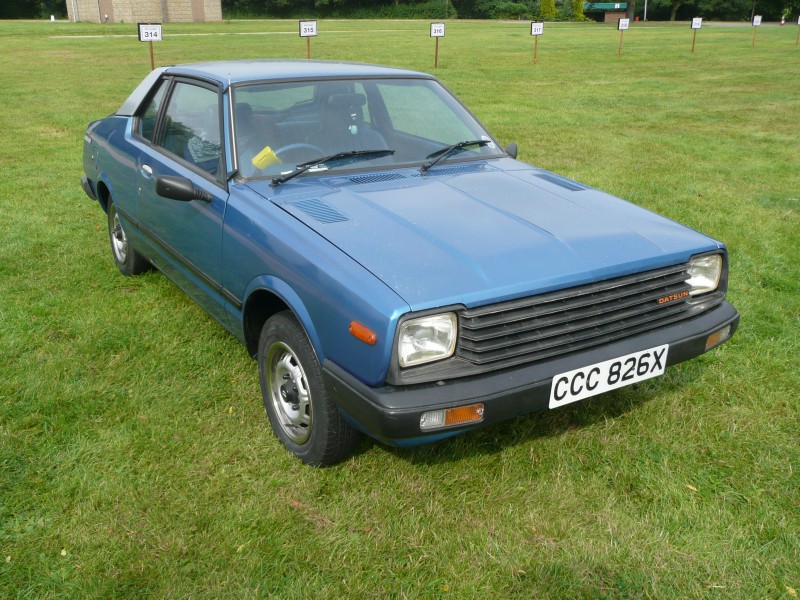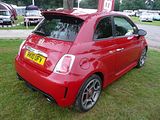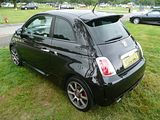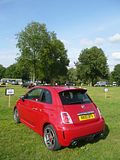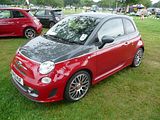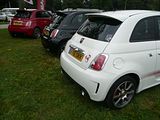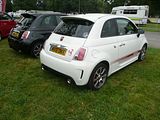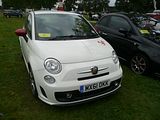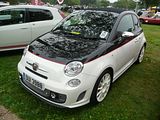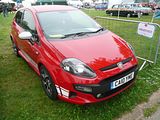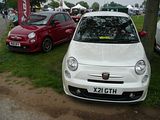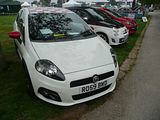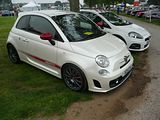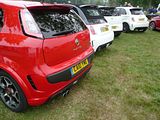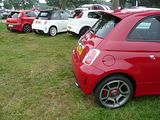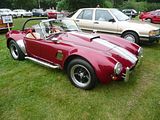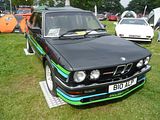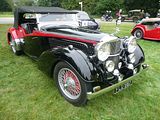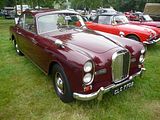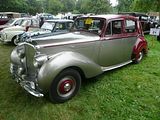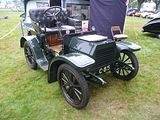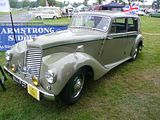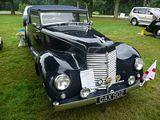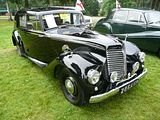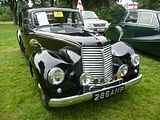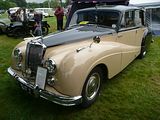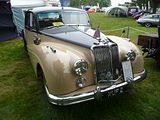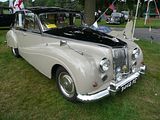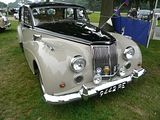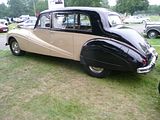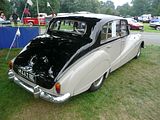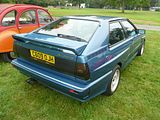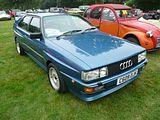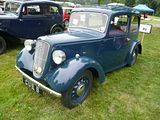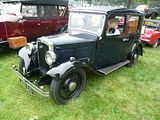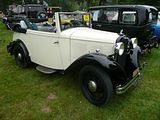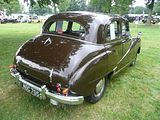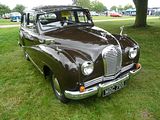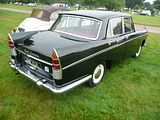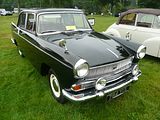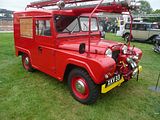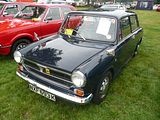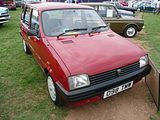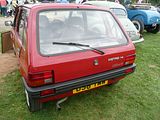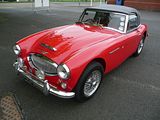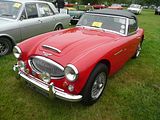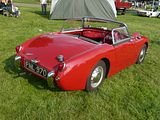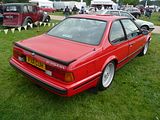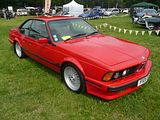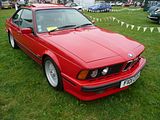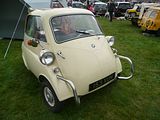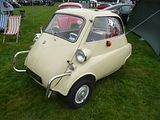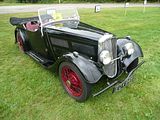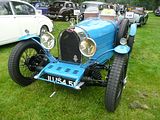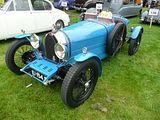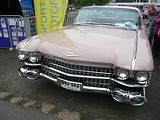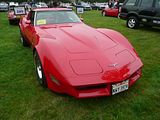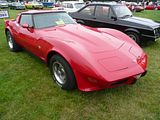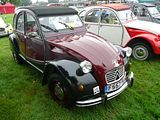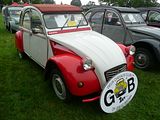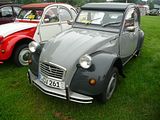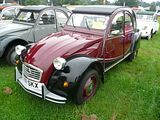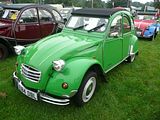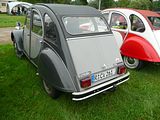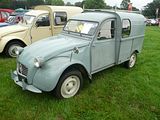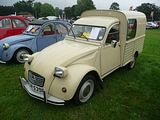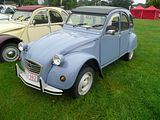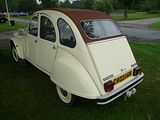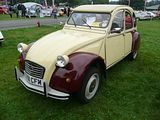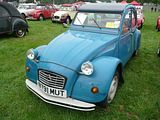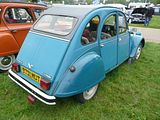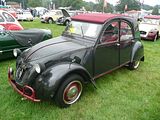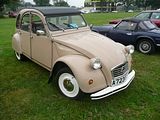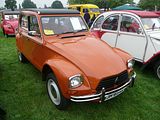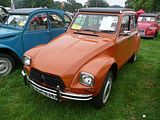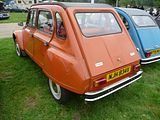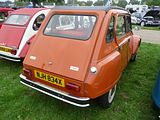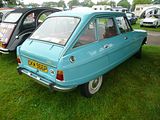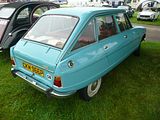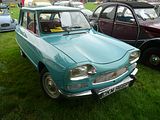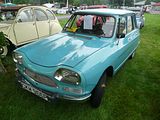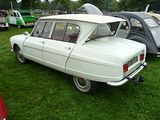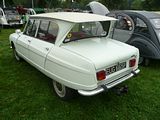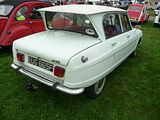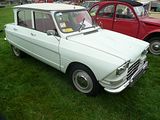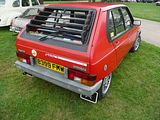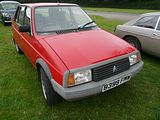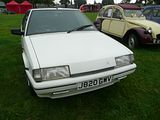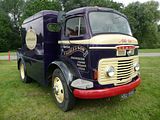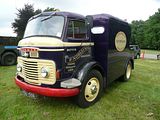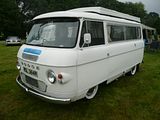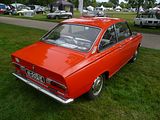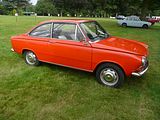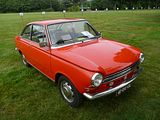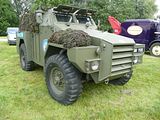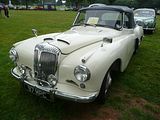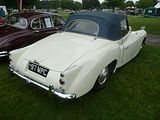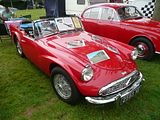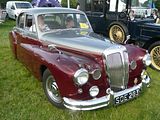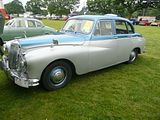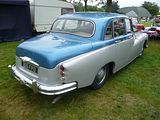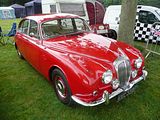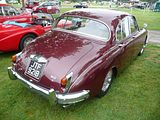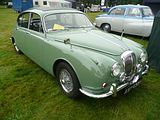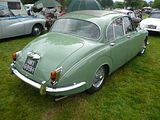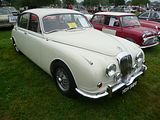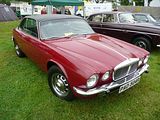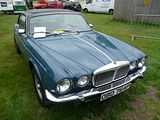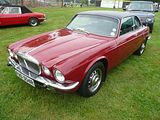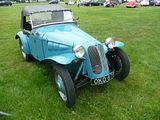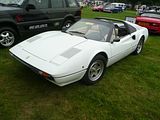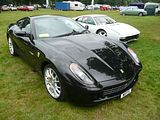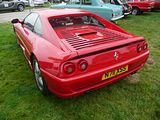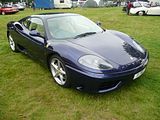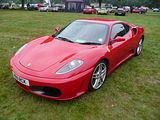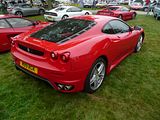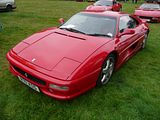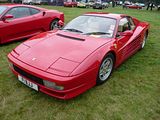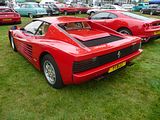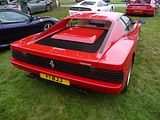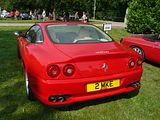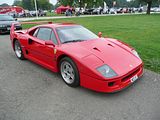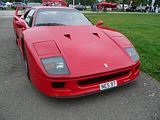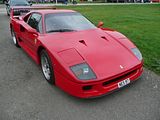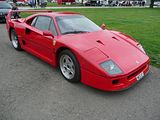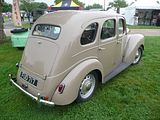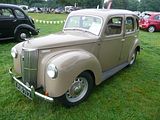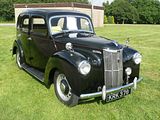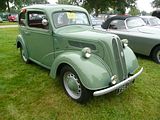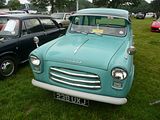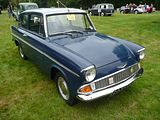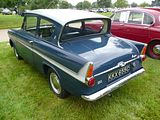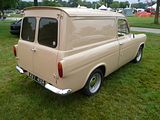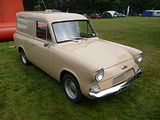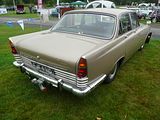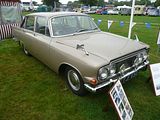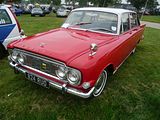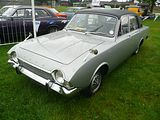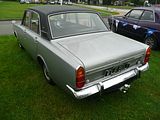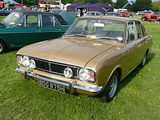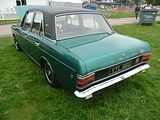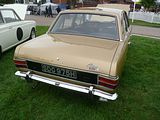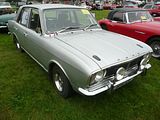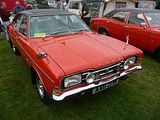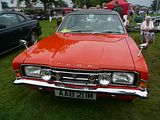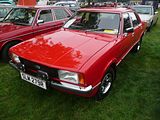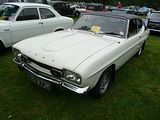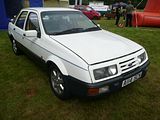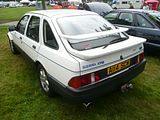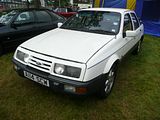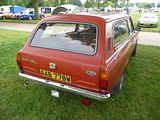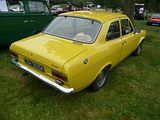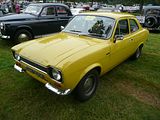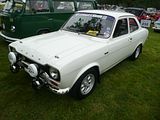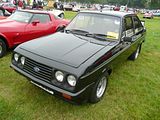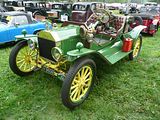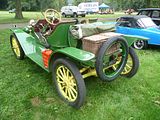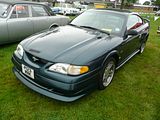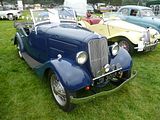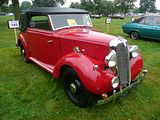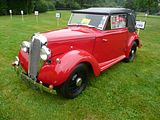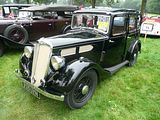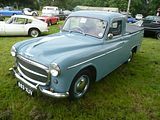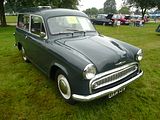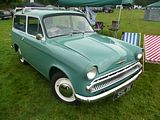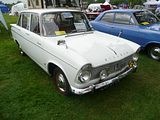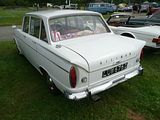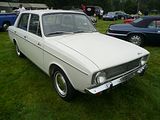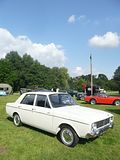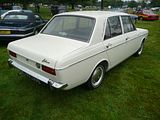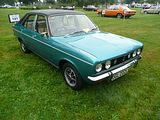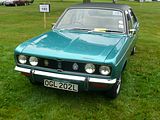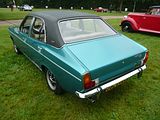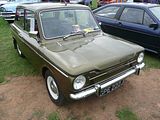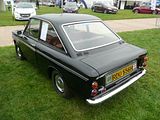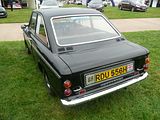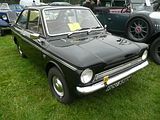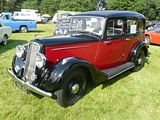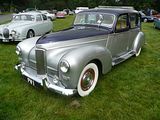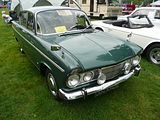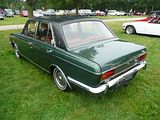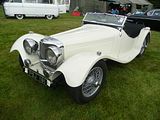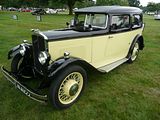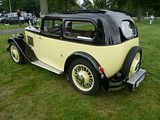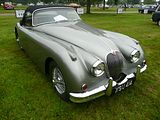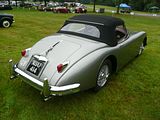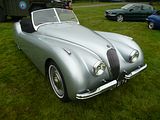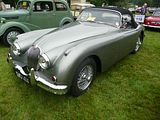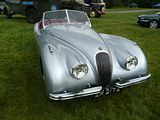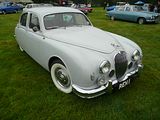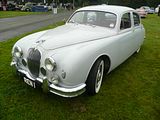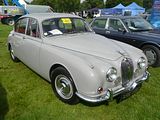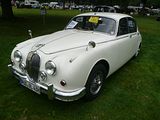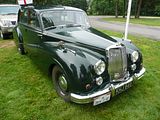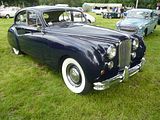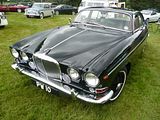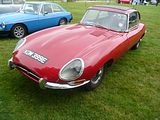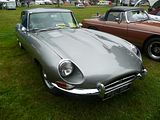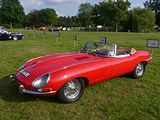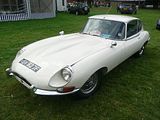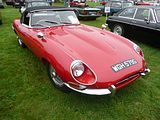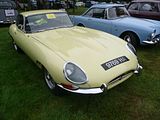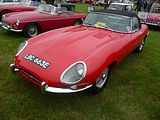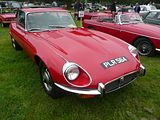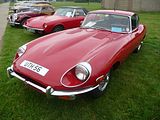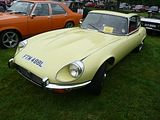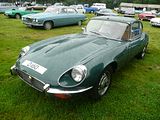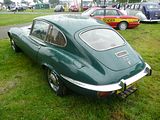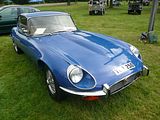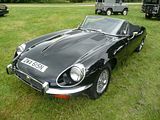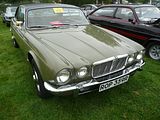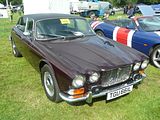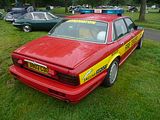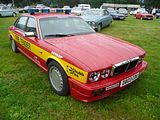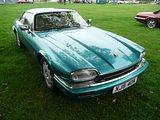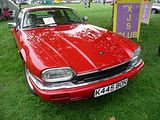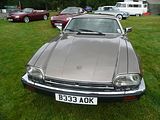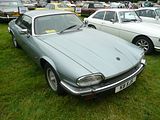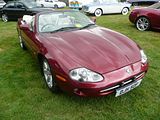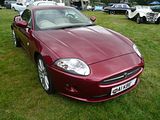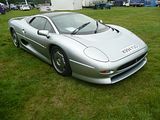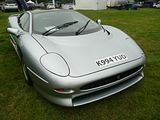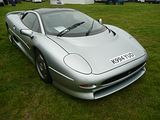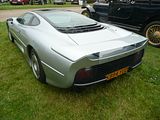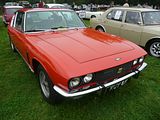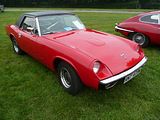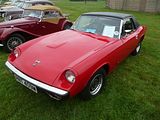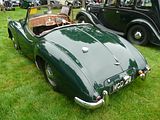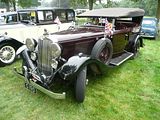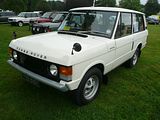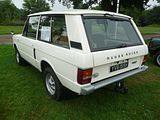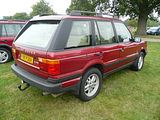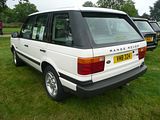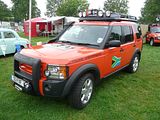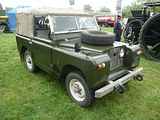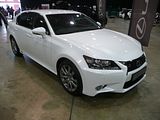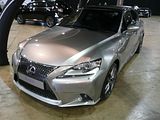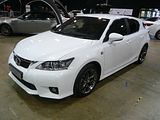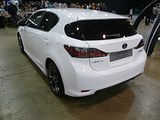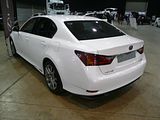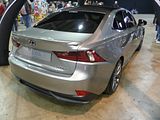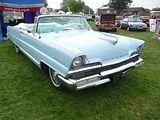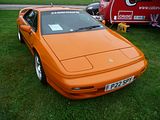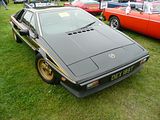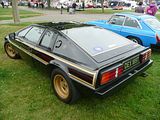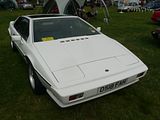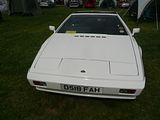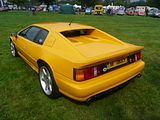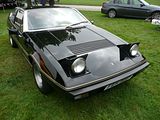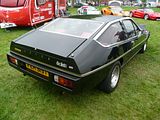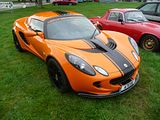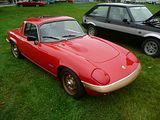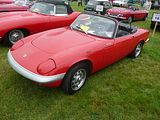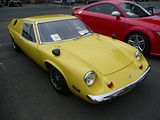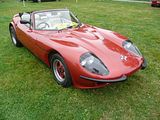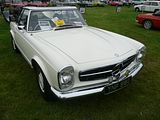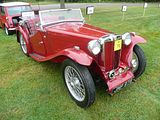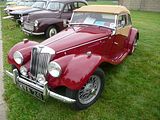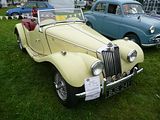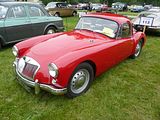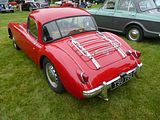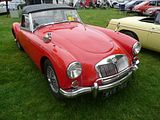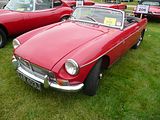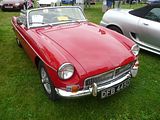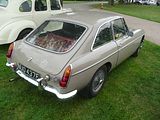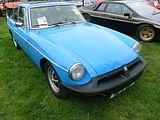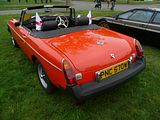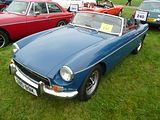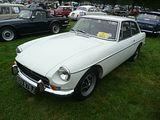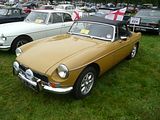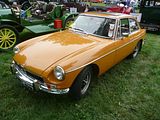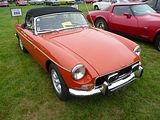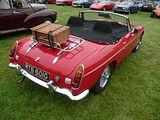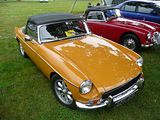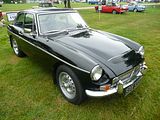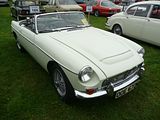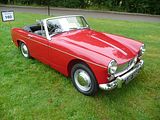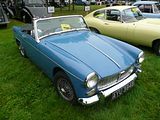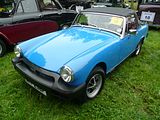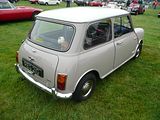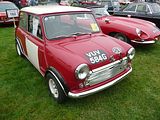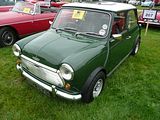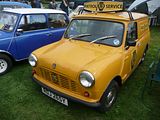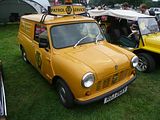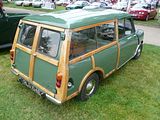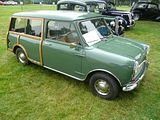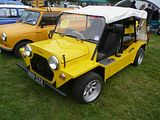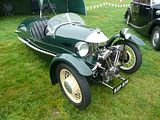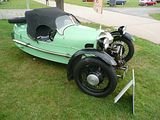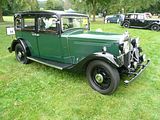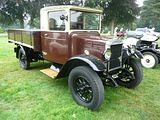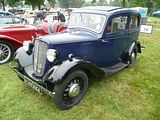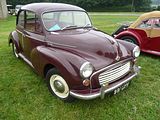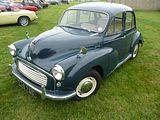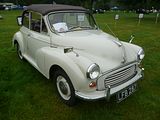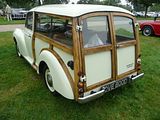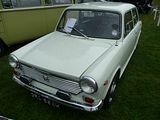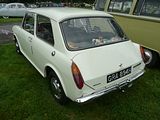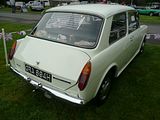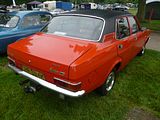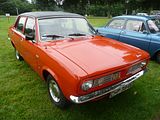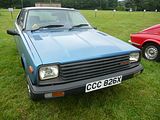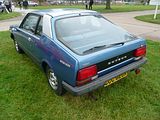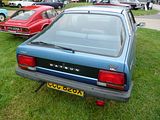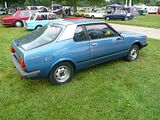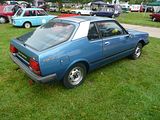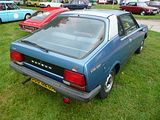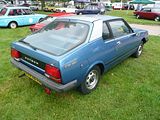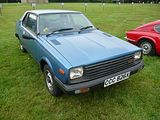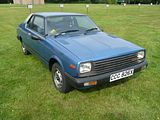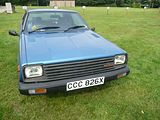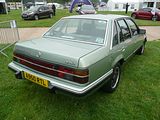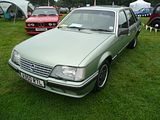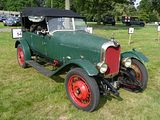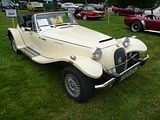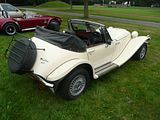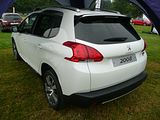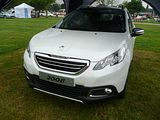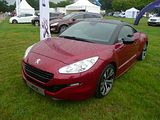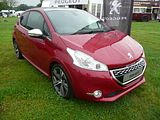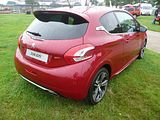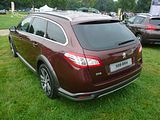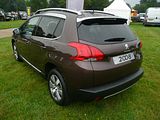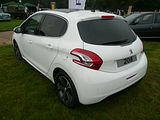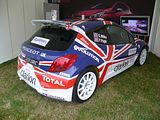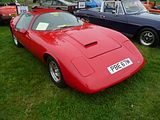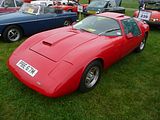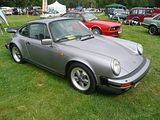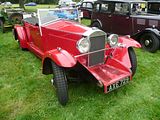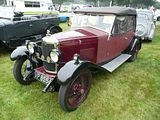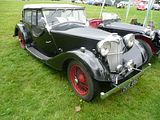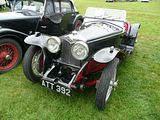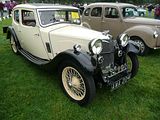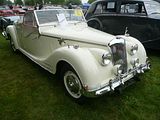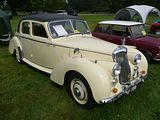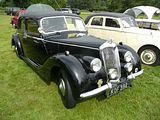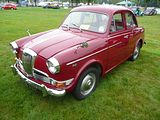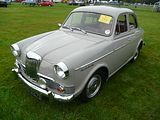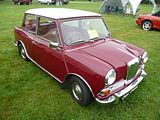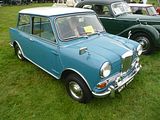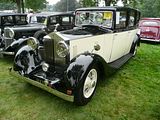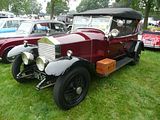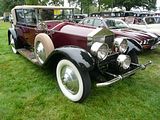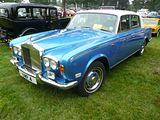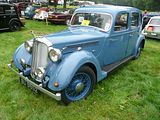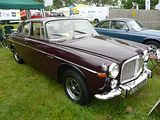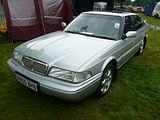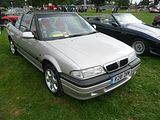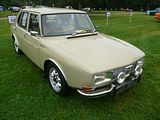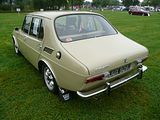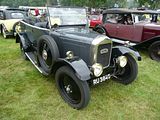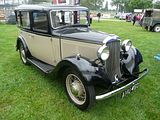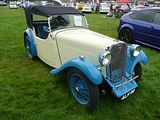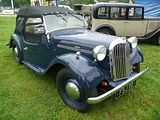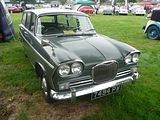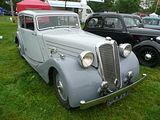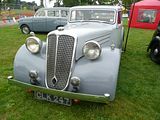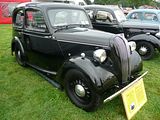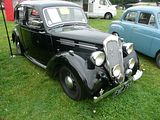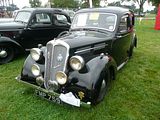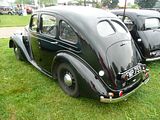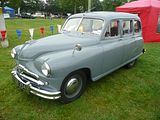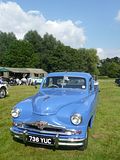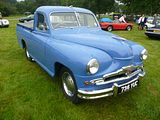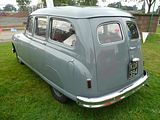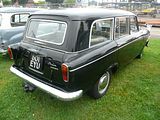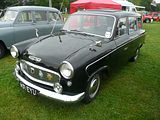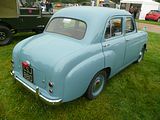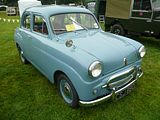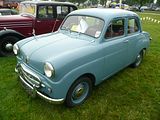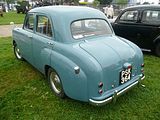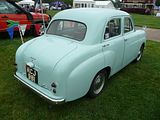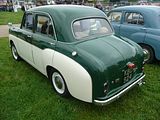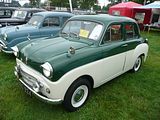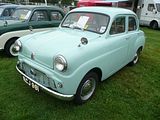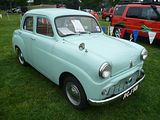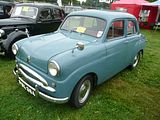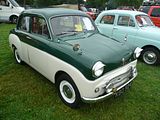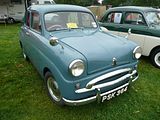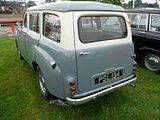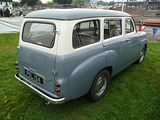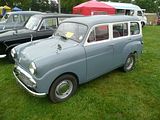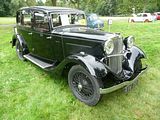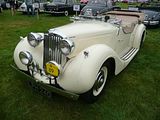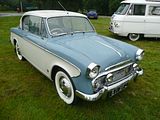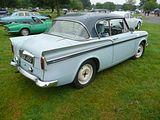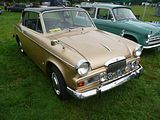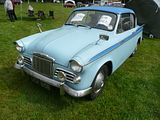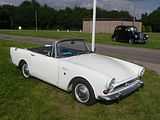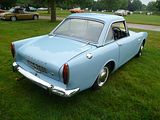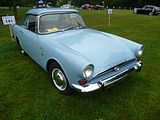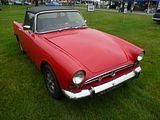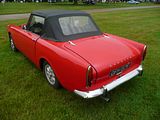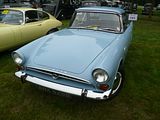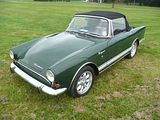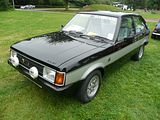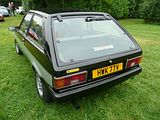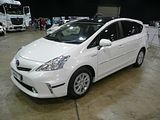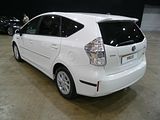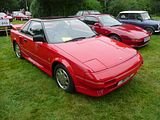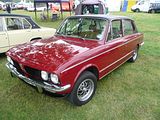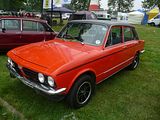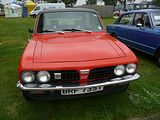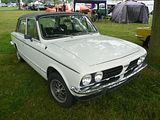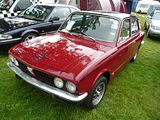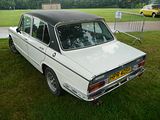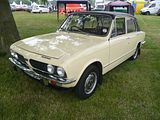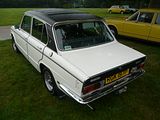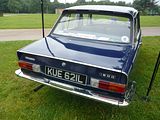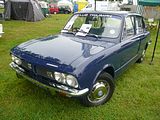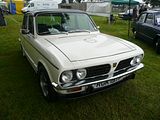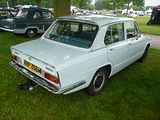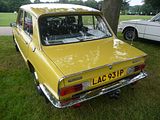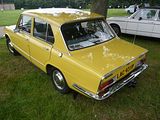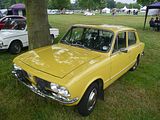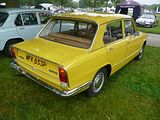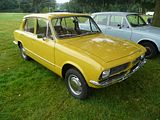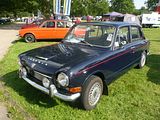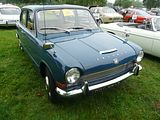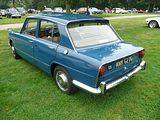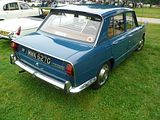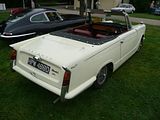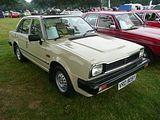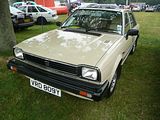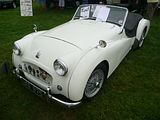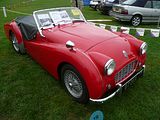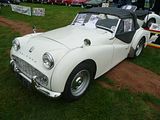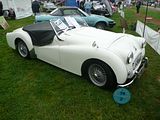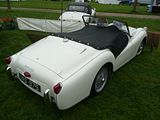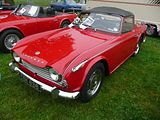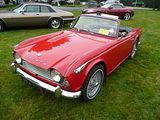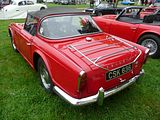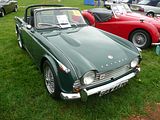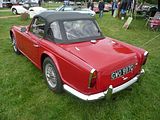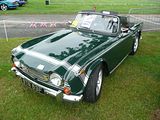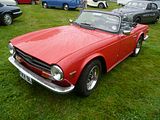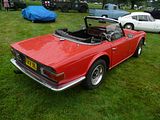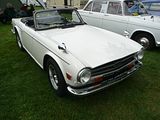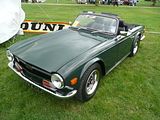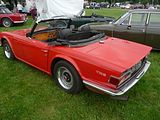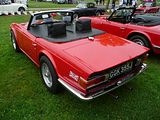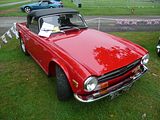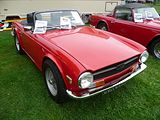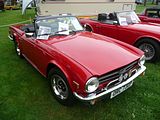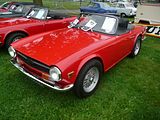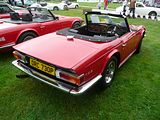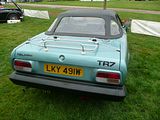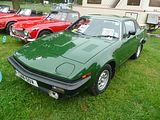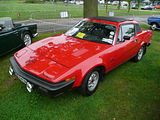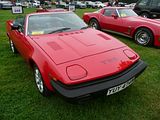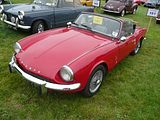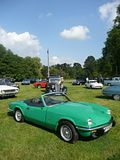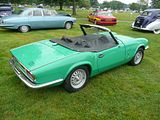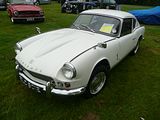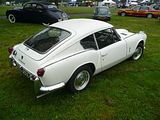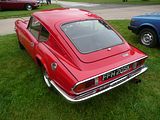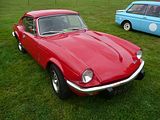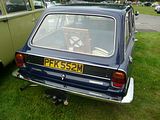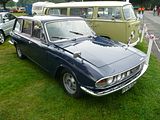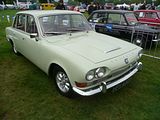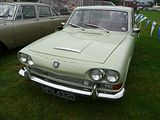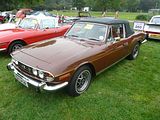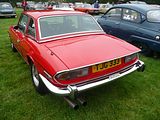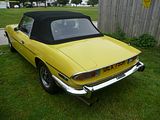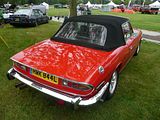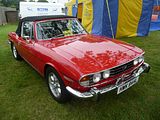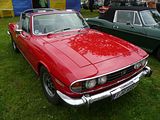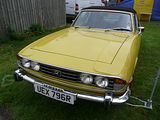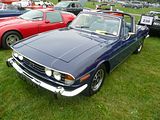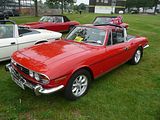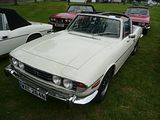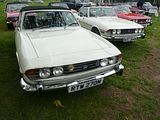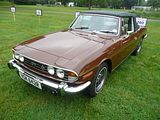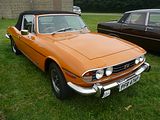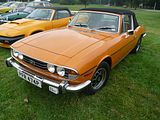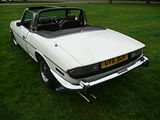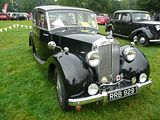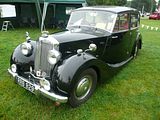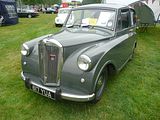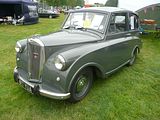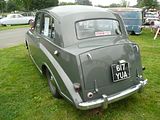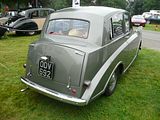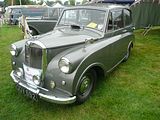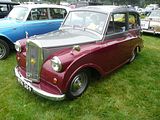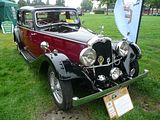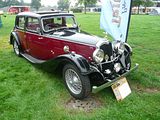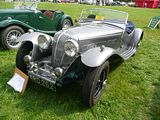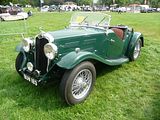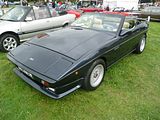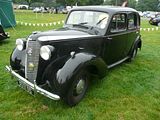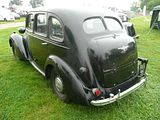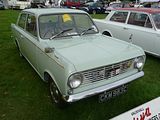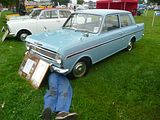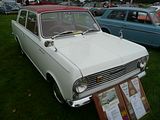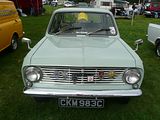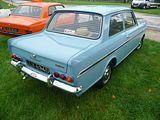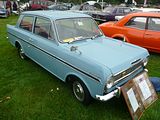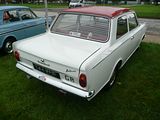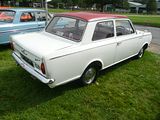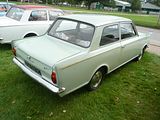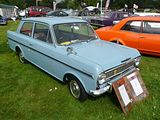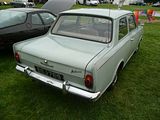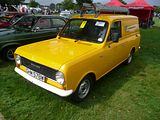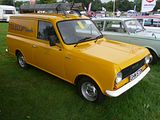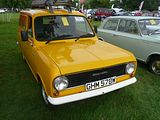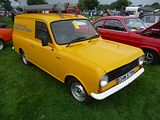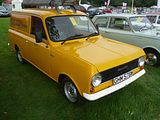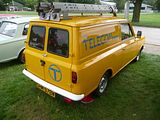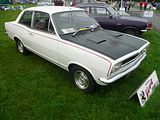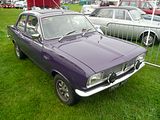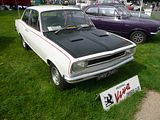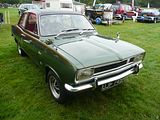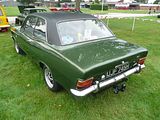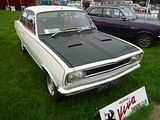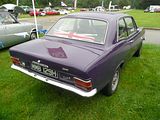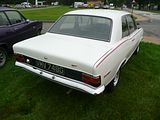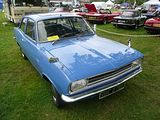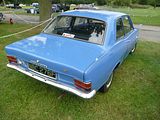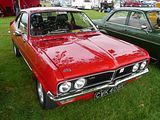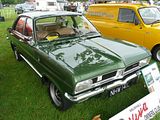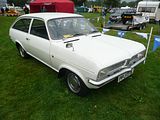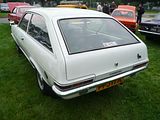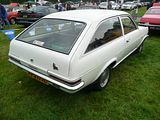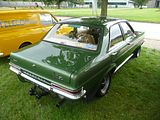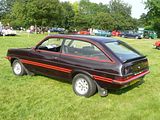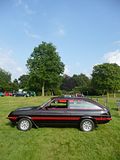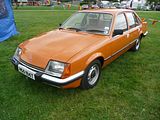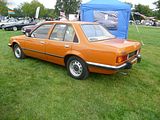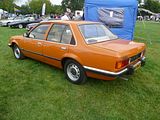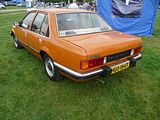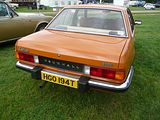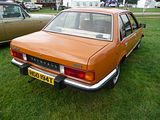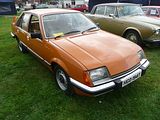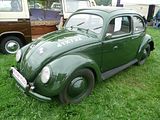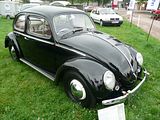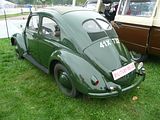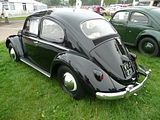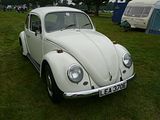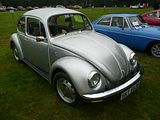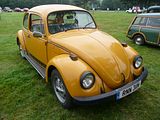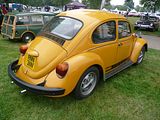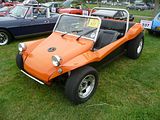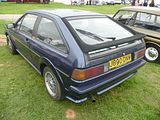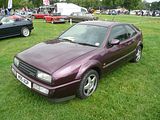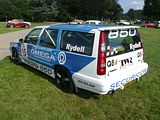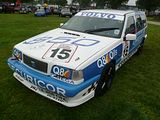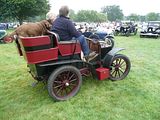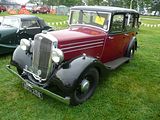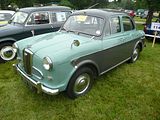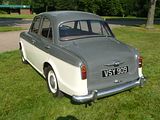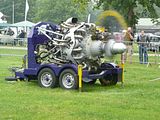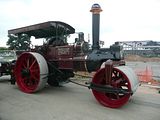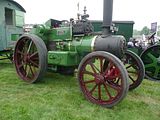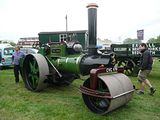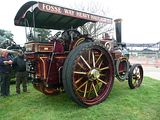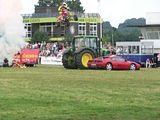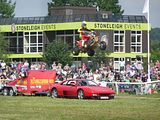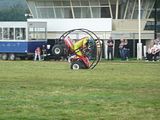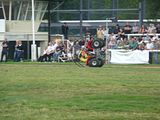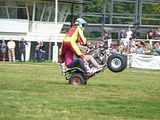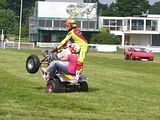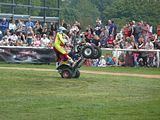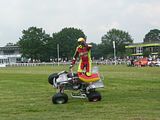My first experience of the Coventry Festival of Motoring was in 2012, and it was sufficiently enjoyable that not only did I vow to return in 2013, but I decided to add it to the list of events for which I would apply for display space for the Abarthisti. Having outgrown its original location in the centre of Coventry by the Transport Museum, 2012 had been the first year when the Festival took place at Stoneleigh Park, a great location with plenty of space for as many cars as the organisers can persuade to apply, as well as scores of other attractions. The Festival takes place over two days, and there is the option on the second day for participants to take part in a carefully planned drive around the Warwickshire countryside. Cars doing this are allotted individual numbered parking spaces at the venue, and as people have to pay for this trip, it was always likely that at least on the Sunday, the 350 cars that had applied would all be there to see before they departed around 11am. That proved to be the case, but there was more than enough left on site whilst these cars were out enjoying the countryside. Many of them were also present on Saturday, though it has to be noted that the Saturday event was much quieter. With an exhibition hall containing some new cars and a small craft show, a fun fair, plenty of action in the arena and a variety of catering stalls, as well as over 50 separate Car Club displays, there was lots to see, as my tally of 563 photos evidences. Read on.
ABARTH
With quite a number of Abarthisti resident in the Midlands, I was surprised not to get a larger take-up from them for what amounted to free entry to the event and a parking position that was nice and central. Even so, there were 4 cars present on the Saturday and 7 on the Sunday, with 500, 500C, 595, Grande Punto and Punto Evo all represented. As ever, they generated a lot of interest, and I spent quite a long time in dialogue with various potential purchasers enthusing about the cars and the brand.
AC
There were a few of the Cobra, all of them recreations rather than the original 1960s product.
ALPINA
I’ve now seen this very distinctive E28 based B10 model at a few events, including the 2012 Coventry Festival, and with Alpina stripes like these it is a car that sticks in the memory more than most!
ALVIS
One of the most splendid cars of the event, was this, a lovely Speed 20 Alvis.
Also rather nice was this TE21.
This was an earlier TC21 car.
ARMSTRONG-SIDDELEY
A local brand, but long forgotten by most people, as car production ceased in 1960. As well as a very early 1904 Siddeley car, there were several post-war models to look at, with a Lancaster, a Hurricane and a number of the Star Sapphire cars.
AUDI
Sole Audi was this urQuattro.
AUSTIN
There were a number of the diminutive Seven models with early and late model cars showing how it evolved over a 17 year production life.
This is the larger Ten.
This is the larger of two Austin models with very similar body styling, the six cylinder A70 Hereford.
An early example of the A55 “Farina” Cambridge.
The Gypsy was BMC’s response to the popularity of the Land Rover. It never made much of an impression on the Landie’s sales though and was quietly dropped after a short production run.
A late model Mark 3 Austin 1100.
A Metro City X in rather nice condition.
AUSTIN-HEALEY
The Big Healey was in evidence, though perhaps with fewer cars than you might expect at an event like this.
There was one example of the Frog Eyed Sprite.
BMW
There were few BMWs at the event, but this 635 CSI more than made up for it. Very nice.
Attracting a lot of attention was this BMW Isetta 300.
BSA
A largely forgotten marque, BSA made light cars in the 1930s as well as cycles and motorbikes.
BUGATTI
A very nice pre-war Type 35.
CADILLAC
This totally over the top, but utterly splendid 1959 Coupe de Ville was parked up with the Sporting Bears. Like almost all of these cars in the UK now, and there are a surprising number, this one was imported relatively recently. The owner said that it takes him 2 full days to clean it properly, and when you look at all the chrome details, you can easily understand why.
CHEVROLET
Corvette Stingray from the late 1970s.
CITROEN
There was a very impressive collection of 2CV models on display on both days. Many of them were on foreign plates, and most arrived together in convoy. Among them were some early cars and examples of the van as well as several of the distinctive limited edition trims that were offered in the 1980s.
Joining them on the Sunday was this lovely Dyane, a car you see far less frequently than its cheaper relative these days.
It was also good to see a couple of Ami models, one on each day, with the later car shown on Saturday and the earlier model on the Sunday.
Elsewhere in the event, l came across a Visa and a BX. Both were spoiled by some non-original and rather nasty wheels, but otherwise looked good.
COMMER
DAF
A 55 Coupe
DAIMLER
Although best known for their cars, Daimler did also produce military vehicles.
The Conquest was so named because its price on launch as £1066. This is the more costly Roadster version.
There were a number of the V8 engine DS250 “Dart” sports cars on show.
The Majestic Major was Daimler’s last surviving saloon of its own design before production switched to rebadged Jaguar models.
There were a couple of Daimler’s version of the Mark 2 Jaguar, the V8250, a relaxed tourer with the small V8 engine under the bonnet.
The two door version of the Jaguar XJ and equivalent Daimler did not have a long production life, which was a shame as they are very elegant cars indeed. This pair are both Sovereign models.
DELLOW
Based on Ford Popular components, the Dellow was popular for entry level motor sport and trials when new and has a small but dedicated following even now.
DODGE
The vast majority of vans like this were badged Commer, but in the final years of production, the Dodge brand was used for all commercial vehicles in the Chrysler portfolio.
FERRARI
There was a display area for the Ferrari Owners Club. The only car that was parked up on Saturday morning looked suspiciously like it might not even have been a real Ferrari, but closer scrutiny elicited that it was indeed genuine. Blame the unusual black paint treatment around the nose and the odd side stripes. It was joined by a 599 GTB.
On the Sunday, there were more cars including 348, F355, 360 and 430 as well as a Testarossa, a 550 Maranello and a white 308 GTS.
This F40 arrived late on Sunday morning and simply parked up on one of the roadways. It did not take long to get a throng of admirers around it.
FORD
This E94 Prefect is an example of the small cars that Ford produced in the immediate post war period.
There was also an E93 Popular, the cheaper model which lived on until the late 1950s.
Replacement for these cars were the slab sided Anglia and Prefect cars first shown in 1953. This is the Anglia version.
The “reverse angle rear window” Anglia 105E was launched in 1959. Later a more luxurious and faster model, the 1200 Super was added to the range. Van versions were also available, though survivors are rare.
This Zodiac Executive was the top model in Ford’s UK range, and this was a beautifully presented example. A second model was to be found on the Sunday.
The Corsair marks its 50th anniversary in October 2013, but as this was a Ford which never particularly captured the public imagination unlike most of its stablemates, there are not that many celebrations of this fact. This is one of the last cars produced, a top of the range 2000E model.
The Mark 2 Cortina Owners Club had a display which included a number of 1600E models and the 3 litre Savage.
There were also Mark 3 and Mark 4 Cortinas on show.
The Capri was represented by a few of the Mark 1 cars.
Most interesting Sierra on show as this, an XR8. These were produced in South Africa, solely for that market.
Another rarely seen car now is the Escort Estate, here seen in Mark 2 guise.
There was also a number of sporting Escorts, with the Mexico and RS2000 cars on show.
Oldest Ford at the event was this Model T.
Reflecting the diversity of Ford’s product range was this fourth generation Mustang and a 1930s German Tourer.
HILLMAN
Minx was the model name used by Hillman for its family cars from the early 1930s, and there were a couple of examples on display.
This Pickup was based on the early 1950s Minx.
In the 1950s, the Minx was the basis for both a van (the Commer Cob) and when fitted with windows, the Hillman Husky. This car has been in the same family from new, has never been restored and has only covered 40,000 miles in nearly 60 years. There was a later example present on the Sunday.
In 1961, Hillman added a larger model to the range, the Super Minx, and here is an example.
I saw this very early Hunter at this event last year and marvelled at its condition. We had a series of these in the family when I was a very small child and they all started to rust from the day they were bought. A rival to the contemporary Cortina, the Hunter was always a bit more expensive, and it never sold anything like as strongly.
The Avenger first appeared in 1970, and was slightly smaller than the Hunter, and so was aimed at the Escort and Viva. Like its larger stablemate, although it sold well, it did not outdo either the Ford or Vauxhall. This was a top of the range GLS car.
The Imp is also 50 years old this year. As well as a regular mode, there was an example of the short lived Coupe model, the Californian.
HUMBER
A Pullman Limousine, top of the range Humber from the late 1940s and early 1950s. Very imposing.
The Sceptre was a posher and more powerful version of the Hillman Super Minx, and when that car was replaced, the Hunter. There were examples of both on show.
JAGUAR
Oldest Jaguars on show were a couple of the very lovely SS100 models and a particularly droolsome Swallow Coupe.
Among the XK sports cars of the 1950s was an XK120 and a particularly rare XK150 OTS. This latter, a car originally sold in New York, hence the left hand drive, attracted a lot of interest in the Concours competition on the Saturday.
Jaguar launched its 2.4 Saloon in 1955, but it is the later Mark 2 versions that you tend to see at shows these days, so it was nice to see an example of the earlier model here. Of course there were Mark 2 models as well.
The larger Jaguar offered at the time was this, the Mark VII.
Replacement for this was the truly gargantuan Mark X. Even with the bloated cars of today, this car does not look anything other than big.
There were plenty of E Types, of course.
Among the XJ models was a lovely XJ6 Coupe and a Series One saloon.
This XJ40 model XJ6 saw service at the Donington circuit as a Fire Tender for many years. In retirement it lives in the Coventry Museum
The XJS Owners Club had several cars on show, few of which were totally original, which was a shame, as the embellishments generally did not improve the car, in my opinion.
There were several of the successor car, the XK8, too, and the replacement for that, the XK.
Attracting plenty of attention on the Sunday was this XJ220. Very special.
JENSEN
The splendid Interceptor.
There was also the smaller Jensen-Healey
JOWETT
The 1950s Jupiter sports car.
LAGONDA
LAND-ROVER
Among the display of Land-Rover models was a “Velar” one of the 22 pre-production Range-Rover cars. This one is number 5 of the series. It was joined by other Range-Rovers including a number of the P38 second generation cars.
A separate display was of G4 Challenge based models.
There were a couple of early Land Rovers as well.
LEXUS
There was a display of Lexus models inside the main Hall. I really struggle to like the new front end styling, finding it brash, and there are plenty of other fussy details on the new IS. Avoiding the attention of the sales staff was a major achievement, but I did manage it!
LINCOLN
A mid 1950s Premiere.
LOTUS
A couple of different Esprit models were on show on the two days, and one of the limited edition JPS cars (number 40 from the sequence) was in the group of cars that went out on Sunday.
Rarer, by far, was this Eclat, the coupe version of the mid 1970s Elite.
Other Lotus included an Exige, a number of early Elans, an Europa and a Plus 2
MARCOS
MERCEDES-BENZ
Conversation with the owner revealed that he has owned this lovely “Pagoda” 280SL for 30 years. He said that he paid £10,000 for it, which seemed a lot at the time, but he is the process of selling it now and will collect £80,000 from so doing. That’s some fairly impressive un-depreciation!
MG
Among the T series cars were a TC and a TF
The MGA is not so often seen in Coupe guise like this one. There were also several open topped cars.
Needless to say there were several MGB models and there was also the far less common MGC Roadster and GT
There were also a few of the smaller Midget models.
MINI
There were a few examples of the “classic” Mini, including Cooper models and a wonderfully presented AA Van and a particularly nice Traveller.
There was also a Moke.
MORGAN
A nice 3 wheeler from the 1930s.
MORRIS
Six
A lovely Commercial.
The Morris Eight continued the sales success of the Minor, offering that bit more space and luxury for a still reasonable price.
The popular Minor was well represented, with Saloon, Tourer and Traveller models all on show.
This 1100 de Luxe mark 2 was very presentable indeed. My mother had a similar such car, though hers was Connaught Green and was a manual unlike this one which had the rare 4 speed AP automatic box fitted.
Also an Automatic was this Marina 1.3 Super. This would definitely not have been a rapid car, but perhaps that has helped ensure its survival.
NISSAN/DATSUN
Probably one of the rarest cars of the day was this, an N10 model Cherry Coupe. These small Coupe models were quite popular in their day, but like almost all Japanese vehicles of the period have all but disappeared now.
OPEL
This facelifted Senator A was offered for sale. Just £2000 would give you a lot of car for not a lot of money.
PALLADIUM
A brand I had never heard of. It turns out that there are just 2 survivors, this one and one in Australia. Dating from 1924, this patinated car is mechanically very simple. There is no bulkhead, and the fuel tank sits just in front of the driver’s toes, up above the engine. A real period piece.
PANTHER
The pastiche roadster, the Kallista
PEUGEOT
There was an extensive display of brand new Peugeot cars, though they seemed to be attracting relatively little interest as most people walked by, intent on seeing the older cars instead. After years in the styling doldrums, the latest models are at least less wilfully unpleasant to look at, but the new suicide pill of that small steering wheel in your lap obscuring the instruments is a potential deal breaker to many (me, for starters).
PIPER
Nice to see one of the Piper sports cars again. They don’t appear often!
PORSCHE
A classic 911 Carerra
RAILTON
RILEY
The Riley Owners Club had an interesting mix of cars, ranging from a couple of 1930s models, to the popular RM Series cars from immediately after the Second World War, a One Point Five and the diminutive Elf.
ROLLS-ROYCE
There were a number of very splendid pre-war Rolls Royce. Magnificent.
There was also a Silver Shadow
ROVER
A rather nicely presented Rover 14.
One of the last of the P5 Rovers, a car which drew much praise for its quality and elegance.
There would be growing interest in the last of the large Rovers, the R17/18 800 Series cars, as evidenced by the presence of a couple of these models at the event.
The same would seem to be true for the R8 based 200/400 cars, such as this 216 Cabrio.
SAAB
This is one of the earliest 99s left on British roads.
SINGER
A 1930s Singer 12hp ( I think).
Singer also made small sports car such as this one.
The Sports was a relatively cheap small sports car offered in the early 1950s. Most were exported and few survive these days.
The Vogue was a posher version of the Super Mix, seen here in Estate guise.
STANDARD
There were lots of Standards on show, thanks largely to a impressive display by the Owners Club. Among them were a couple of 1930s models.
Large car in the post war range was the Vanguard. Although most commonly seen as a Saloon, it was also available as a Pickup and an Estate. One of these last was actually the cheaper Ensign model.
There were several examples of Standard’s small car offering from the 1950s. Launched initially as the Eight, and with plenty of evidence of cost cutting, such as the absence of an external boot lid, the car was gradually made a little less spartan and more powerful models arrived with the Ten and the Pennant, before the range was replaced by the Triumph Herald. An estate model was also offered, called the Companion.
SUNBEAM
Based on the “Audax” Minx, the Rapier was a stylish 2 door coupe that launched in 1955 and ran until 1967, during which time it underwent a steady program of evolution with subtle changes to the styling and trim details and a lot of mechanical upgrades. It was successful as a rally car. There were a number of these cars on display.
The Alpine sports car was launched in 1959 as a competitor to the MGA, and later the MGB. The body did not change much over the next 8 years, though the rear find were toned down a lot, but the car did benefit from the ever evolving Rootes Group mechanicals. To many eyes, mine included, the car was more attractive than the Abingdon product, but it was also more costly and it did not sell as well. There were also a couple of the hot Tiger cars on show.
TALBOT
The Sunbeam Lotus
TOYOTA
As well as the new Lexus cars already presented, there were some of the latest Toyota as well.
Outside there were a couple of MR2 sports cars.
TRIUMPH
Strong showing from the Dolomite Owners club, with several of these desirable cars, which as well as Dolomites included a couple of the cheaper Toledo and the front wheel 1500 and rear wheel drive 1500TC models.
There were also a couple of the antecedent to this, the 1300.
The 1300 had been intended to replace the long lived Herald, but as it was more costly, it never did, and the Herald and Vitesse, examples of both of which were on display, lived on until 1971.
The last ever Triumph model was the Acclaim. There are not many around these days.
The local section of the TR Register had a very comprehensive display of cars, with models from the TR2 to TR7 all well represented. There were some additional TR models in the other displays as well.
Among the Spitfire models were a Mark 3 and a 1500
There were a couple of the coupe version, the GT6, too, with first and third generation cars on show.
Of the large cars, there was a nice 2500 Estate and an early 2000 Saloon
There were plenty of Stags in the group of cars that went on the lunchtime tour, and the Stag Owners Club also had lots of these elegant tourers on their stand.
From a earlier era was this rather stately looking Renown. These cars were made in small numbers from 1948 until 1953.
Copying the same styling theme was the smaller Mayflower.
Earlier still were the array of pre-war cars, with a mixture of Gloria and Dolomite models. Very desirable indeed, all of them.
TVR
There were not many TVRs on show, but there was this “wedge”.
VAUXHALL
You don’t see pre-war Vauxhalls very often, so it was nice to see this “J” type Vauxhall 14, an upper medium sized family saloon from 1938.
The Viva celebrates its 50th anniversary in a matter of weeks, and fittingly, there was quite a display of Vauxhall’s small car on show here. There were representatives of all three distinct model generations, HA, HB and HC, as well as a beautifully restored Bedford Van in British Telecom livery, and the Firenza Coupe which was based on the HC cars. The HA cars in particular looked especially basic inside, with seats that looked like they would give instant backache!
Taking part in the lunchtime outing was this Sports Hatch, a limited edition car which combined the Magnum Estate body with the Firenza Droop Snoot front end.
Very rare indeed was this 1979 Carlton. Conversation with the owner revealed that it is the only 1979 car on the road, and one of only a few left. He bought it from the Attwell Wilson Motor Museum last year, where it had been slowly deteriorating in a corner, and sure enough when I reviewed my photos from a visit there, I found the self same car, tucked in among plenty of other cars. A very definite period piece with its bright orange paint and less bold orange coloured velour seats.
VOLKSWAGEN
The VW Owners Club had quite a lot of cars on show, most of which were simply modern models of no particular note (yet – their time will surely come), but there were some nice old Beetles, including some very early ones, and an example of the “Jeans Beetle” a limited edition model produced which featured denim seat trim.
This Beach Buggy was based on Beetle mechanicals.
There was a space reserved for the Corrado Owners Club right next to the Abarthisti parking, but they only seemed to amount to two much modified cars, one of which was a heavily mutilated Scirocco. This Corrado and second generation Scirocco were elsewhere in the event.
VOLVO
Memories of the 1990s were rekindled on seeing this 850 T5 in Touring Car livery.
WOLSELEY
One of the very oldest cars at the event was this 1904 Wolseley.
Even in the 1930s, Wolsleley was known for making cars that were that bit more luxurious than the mass market vehicles and here is such an example.
The 1500 was a sister model to the Riley OnePointFive.
BRISTOL AERO ENGINE
Fired up at 10am on Sunday morning, this would surely have woken anyone who was having a nap!
TRACTION ENGINES
A most impressive collection of six of these massive workhorses, all them in steam, were quite a crowd puller during both days. Very slow, I came across one on the road on leaving the event, and wondered just how far it was planning to go at all of 5 mph!
THE KANGAROO KIDS
One of the attractions taking place in the arena were the twice a day displays by Sam and Matt Coulter, the Kangaroo Kids. I first came across them at Cholmondeley earlier in the year when they were trying to see how many forward rolls they could do in their Quad Bikes. That trick was being repeated at this event – and the answer was four – along with some other stunts. A number of hapless spectators were invited to come into the arena and join them on the bike as they proceeded to do wheelies with both the front wheels and then to the side, culminating in four people plus a Kangaroo Kid to control the bike. More impressive was not just when one of them did a jump over a Ferrari 348, but when he then got a John Deere tractor in position, and put the Ferrari beyond it and still cleared the lot quite comfortably. An impressive show!
This was an excellent event. Amazingly, the weather stayed dry, despite the forecast, and there was plenty to see especially on the Sunday, which meant that there was no time to avail myself of the free historic shuttle bus service to the Coventry Motor Museum. Revisiting that will have to be for another day. Meanwhile this event is definitely worth putting in the diary for 2014.

